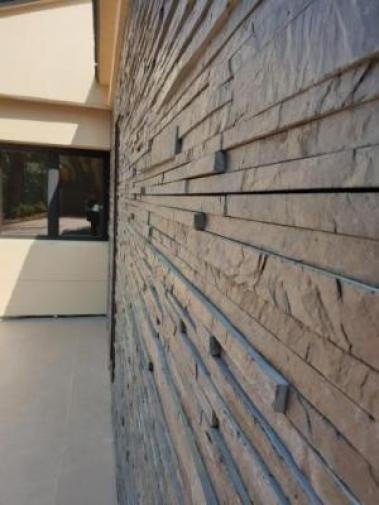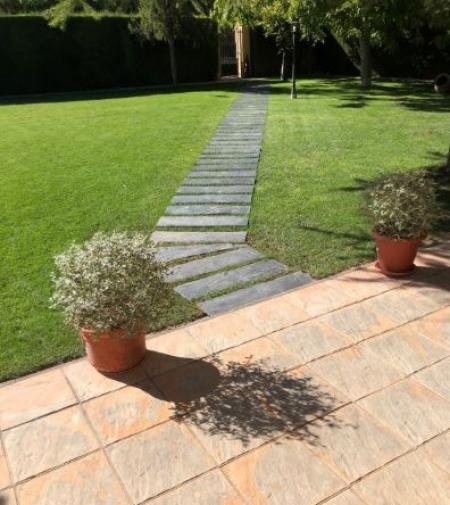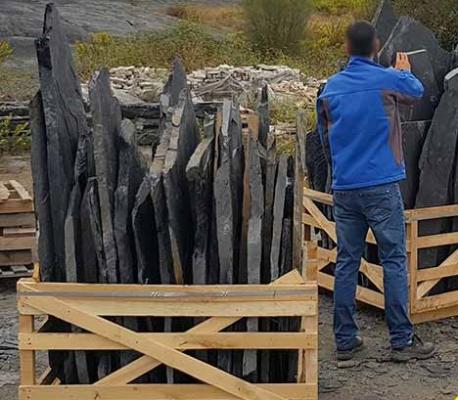Teresa González Díez
Spain is the country with the best slate in the world. Its quality and resistance make it a unique natural stone. There are three areas distinguished by their extraction: the northern area, with the Autonomous Community of Galicia at the forefront of production, and the province of León; in the central area, we find slate from the Segovia region; and in the south, slate from Villar del Rey in Badajoz, which, for now, has ceased to be mined.
All these ornamental rocks are generically called slate, but there is a slight difference between them, depending on the location of the quarries and their composition. Although both are metamorphic rocks and are produced by hand using hammer blows that open each slab along the planes of exfoliation, some are slate and others are phyllites.
Slate is a fine-grained, homogeneous, foliated metamorphic rock derived from the original sedimentary rock type schist, composed of gypsum or volcanic ash through low-grade regional metamorphism. (Wonasa Guide). It is a material that remains unchanged by cold, frost, heat, humidity and other environmental factors and is not attacked by bases or acids.


Slate. Images: DEPIZARRA
Phyllite is a stone very similar to slate, but its schistose texture is brighter and more crystalline. In fact, its crystallinity is its main difference. Its geological evolution is even greater than that of slate, which gives it greater hardness and durability. It is composed of very fine crystals of muscovite mica, talc and chlorite. Another difference between the two is that its surface is more undulating.
.jpg)
NATURPIEDRA
.jpg)
J.BERNARDOS
The main colours of Spanish slate are black and grey. Within the phyllites we can also find green and red or multicoloured.
QUARRIES
Galicia is where most of Spain's slate quarries are located. By province, the areas where the quarries are located are as follows:
Orense: Villamartín de Valdeorras and Carballeda de Valdeorras, where the largest underground slate quarry, La Fraguiña, is located, with a unique extraction process that makes the most of the rock.
Lugo: A Fonsagrada, A Pastoriza (green phyllite quarry), Mondoñedo, Pol, Quiroga and Samos.
La Coruña: Ortigueira.
In the Autonomous Community of Castile and León, there are quarries in:
León: The town of La Baña.
Segovia: the Bernardos quarries.
APPLICATIONS
Throughout history, slate has mainly been used for roofing. Its impermeability and resistance to frost, as well as its excellent thermal insulation, make it an ideal material for this application. The slates come in different shapes and thicknesses: rectangular, ogival, round, pentagonal, etc.
For particularly cold areas, such as northern European countries, roofing tiles are manufactured in thicker sizes to make them more resistant.

DEPIZARRA
.jpg)
NATURPIEDRA
It is a very suitable material for façades and ventilated façades, its other major application. However, it can also be found in outdoor flooring (especially in gardens and landscaping), indoor flooring, bathroom walls, shower trays, countertops, furniture such as tables and benches, and kitchen and catering utensils: plates, trays, etc.
.jpeg)
DEPIZARRA
.jpg)
PIEDRAS DE GALICIA
The finishes available are: natural, polished, satin or aged, and disc cut.
MARKETS
90% of the slate sold worldwide comes from Spain. Although its sales percentage has fallen in recent years, it still maintains its position as the world's leading producer and exporter.
It is exported all over the world, but its main markets are France, the United Kingdom, Germany, Belgium, Ireland and the United States. These six countries alone purchased a total of 386,958 tonnes out of a total worldwide sales figure of 411,811 tonnes in 2024.
***
It is worth noting that two Spanish phyllites have been designated World Heritage Stones: the Bernardos phyllite and the Lugo Green Phyllite.
